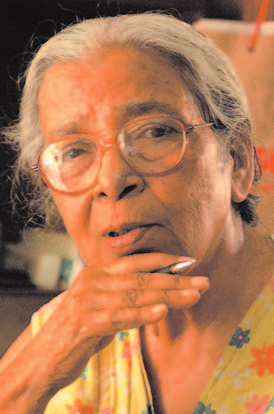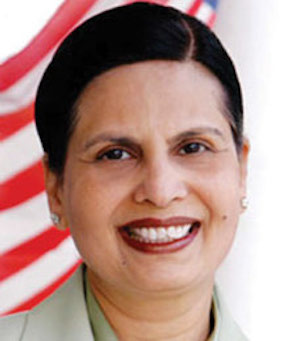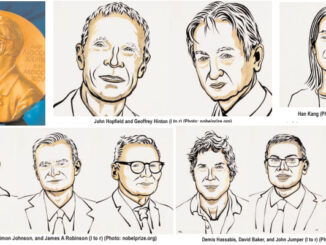
Mahasweta Devi, the 90-year-old eminent writer-activist who passed away, July 28, symbolized writing for life’s sake. As she herself said, “It is my conviction that a storywriter should be motivated by a sense of history that would help her readers to understand their own times. I have never had the capacity nor the urge to create art for art’s sake. Since I haven’t ever learnt to do anything more useful, I have gone on writing. I have found authentic documentation to be the best medium for protest against injustice and exploitation.” Mahasweta was no ivory-tower writer, a crusader’s zeal propelled her. Be it her involvement with the Singur agitation in West Bengal or welfare of tribals of Bihar, Orissa, Bengal and Madhya Pradesh that won her the Padma Shri in 1986, she chronicled the struggles of the subaltern classes. She fought for the rights of the landless and peasants, taking on corporate and politically entrenched interests. The recipient of the Jnanpith Award for 1996, explored motifs in modem Indian life through figures and narratives of indigenous tribes of India.
Born in 1926, she was reared in a Dhaka family whose bread-winner, a lawyer, chose against all odds to fight the imperialists. As she said: “My grandfather had to suffer a lot for fighting the cases of freedom fighters. But right from childhood, I was brought up in an atmosphere where compromise was taboo…”. Her father, poet Manish Ghatak, uncles Sachin Choudhury, the founder-editor of the Economic and Political Weekly, and Ritwik Ghatak, an avant garde filmmaker were dominant influences. Her mother and grandmother too wrote. In fact, the women in the family had a lively relationship with books. In 1948, Mahasweta married the legendary playwright Bijon Bhattacharya of IPTA, the author of Navanno.
Mahasweta studied literature but loved history and experienced life in varied ways – be it as a teacher or during a stint at the office of the DAG Posts and Telegraphs, assignments as a roving village reporter of the Bengali daily Jugantar. All these combined to hone the social realism that characterized her fiction. Besides 42 novels, 20 collections of short stories, five books for children, a collection of plays and translations, she also co-authored a book in Hindi – Bharat Mein Bandhua Mazdoor. Mahasweta created a span of history, allowing individuals to evolve through their interactions with the historical process. While chronicling history, she captured tones of oral narratives, in the raw idiom of everyday speech, often drawing words from several sources simultaneously. She was aghast at the casual way in which peasant up risings had been dismissed by chroniclers of India’s freedom movement. By documenting the lives and times of folk heroes, Mahasweta felt she was lending voice to the voiceless sections of society. Winning the Sahitya Akademi award for Aranyer Adhikar (1977) was a personal triumph. She had reconstructed the career of Birsa Munda, leader of a millenarian tribal revolt at the turn of the century. Her first published work, Jhansir Rani (1956), was a fictional reconstruction of the career of feudal chieftain Laxmibai, who fought against the British for her rights. For this, Mahasweta delved into archival records and travelled through the desert villages and plateau where the queen had lived and fought more than a 100 years ago.
With painstaking care, she collected scraps of legends and folk ballads treasured in the collective memory of the region. Some of her other works are Not, (1957), Ki Basantj Ki Sorate (1958), Amrita Sanchay (1964), Andhar Manik (1967), Hajar Churashir Ma (1974), Aranyer Adhikar (1977), Agnigaritha (1978) and Chotti Munda o Tar Teer (1979). Besides this, Sunghursh, (1968) Rudaali (1993), Hazar Churasi Ki Ma (1998), Maati Maay (2006) and Gangor were movies made on her stories.
From the late 1970s, the subjects of her stories became the subjects of her life and she got more and more involved with her work with tribals and underprivileged communities in the districts of Mednapur, Purulia, Singhbhum and Mayurbhanj. She set up several voluntary organizations for their welfare and helped bring their grievances to the view of an indifferent bureaucracy. With the funds sent by her translator Gayatri Spivak, she set up five schools in the tribal heartland of Purulia.
While working with the tribals, Mahasweta noticed the peculiar paradox of tribal women’s life – their almost superhuman lifestyle and their fierce independence. From this flowed greatest short stories – Standayini, Draupadi, Douloti and Gohuinni.
She was surprised at, the red-carpet treatment given to her when she visited Delhi to receive her Sahitya Akademi Award in 1979. All those who listened to her, at the India International Centre were struck by her sharp manner. No glib urban sophistication. After all, she came to Delhi very often and made the rounds of offices to collect funds for her cause. This time it was in the air-conditioned confines where she was being questioned about feminism. For a woman with a cause, her preoccupations transcended boundaries of gender and facile generalizations.
Two classes of characters dominate Mahasweta’s stories The first are mothers bearing the brunt of social and political oppression and resisting with indomitable will. The other are sensitive individuals, initially apolitical, bound to the community with strong ties. As the individual absorbs the dehumanizing experience of exploitation, he grows to the role of a leader. Mahasweta’s Bashai Tudus, Chotu, Mundas and Mastersaabs are products of exploitation, direct and inhuman. Right from Chandi, cast out by a superstitious community in Baoen (1971), to the tribal Naxalite Draupadi in the story named after her, Mahasweta’s mothers are too earthy and emotion-charged to bear overtones of any mystical, mythical or archetypal motherhood.
The most famous novel, Hajar Churashir Ma (Mother of 1084) is set against the climactic phase of the annihilation of urban Naxalite movement and its aftermath. Sujata,the mother of corpse number 1084, can find a moral rationale for her son Brati’s revolt only when she can piece together, exactly two years after his killing, part of her son’s life she had never known. She can see in Brati’s revolt an articulation of the silent resentment she has against her corrupt but respectable husband, her other children, their spouses and friends.
Urvashi o Johnny,the story about the relationship between a ventriloquist and his talking doll, is just about the Emergency.The cancer of the throat of the doll is a metaphor for the suppression of democratic rights. The shock, pain and utter helplessness which the Emergency plunged Indian sensibility is captured in this strange story. In an age where books are more about hype and market-savvy tricks, writers like Mahasweta are rare. Digging a well is a leitmotif in her stories and that is what she did even in life – digging away and carving out an existence for the people whom she had given herself to. In an era of liberalization and, fast-changing beliefs (if any), the much-awarded writer embodied the triumph of substance over style.
(The author can be reached at arutinayar@gmail.com)





Be the first to comment